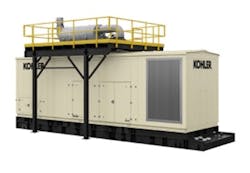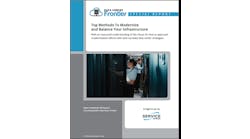Making the Most of Restoration and Recovery to Build for Future Disaster Preparedness
While the season officially began on June 1, we aren’t used to seeing them quite so early, so a named storm last week came as a small surprise. And as we’ve seen in recent years with all forms of natural disasters, geography hasn’t been as reliable a predictor of the extreme weather anomalies we’ve faced. Some of the disasters that have impacted our industry recently weren’t common to the area they occurred in. Weather-driven disasters have also become more frequent and more extreme, with such an active hurricane season in 2020 that we ran out of names and had to move to the Greek alphabet.
In just the past couple years, data centers have been impacted by weather extremes from floods in Australia to hurricanes in New York to freezing storms in Texas to droughts in Taiwan. Natural disasters are only getting more challenging and unpredictable. Add in unknown issues like fires in Paris or man-made issues including system attacks literally everywhere, and it is easy to begin to get a little nervous about what will happen next. Our industry is used to dealing with disasters and we operate in a way that builds resiliency in from the start.
We are a cautious industry when it comes to putting faith in new technology and practices. This has helped us weather the storm (pun totally intended). In many of these cases, data centers were mostly able to ride it out, which only speaks to their preparedness efforts, but it also says a great deal about luck. As we’re seeing, that isn’t always going to be enough to tackle the extremes we’re starting to experience.
But enough gloom and doom. We are also a relational industry! Our ability to network and collaborate is hardwired into what we do.
Take sustainability efforts as an example. We all know that we all need to act and that we need to share best practices for the betterment of the world. I love what iMasons is doing with their new Climate Accord – gathering so many organizations committed to transparency in their sustainability efforts. I believe the same level of commitment to transparency is needed when it comes to disaster recovery. After all, both sustainability and resiliency to natural disasters root in a desire to understand, predict, tolerate, and at best, bolster our natural world. In doing what is right for Mother Nature, we should apply similar transparency principles whether it is for building positive impact or negating harm.
When a site goes down, naturally everyone wonders what the main cause was and whether it could have been prevented. Often times after a disaster, all we hear are whispers once it is too late: “their sprinkler system didn’t come on,” or “the diesel trucks couldn’t reach them in time.” Even worse are the rumors and speculation! “Maybe they were hacked?” Among operators, there might be a suspicion of what went wrong and a doubling-down on efforts to make sure their own facility is more prepared. But there’s no database or archive, rarely a firm account of what led to a system failure. Some announce plans to release cause data years after the event. How then can we learn from each other and provide for end-users, all of whom just want connected systems that work reliably?
There is this amazing psychological effect after a disaster where we remember that we aren’t alone in this world. Neighbors who have never seen each other come together and lend each other a hand. Sadly, this effect doesn’t last; we go back to business as usual pretty fast. And this isn’t isolated to residential neighborhoods. We’ve seen the same in the data center industry, for example, after Hurricane Sandy hit New York and adjacent data centers were sharing diesel fuel supply and building scaffolding to keep their generators above water.
Disaster recovery mentality is actually a fascinating process from a psychological perspective. There’s a heroic or altruistic phase where everyone joins forces to do whatever is needed; a honeymoon phase, where everyone continues to be friendly and supportive; then a disillusionment phase where aid is shut off and we realize we are on our own in recovery efforts and begin to rebuild. But there is one more stage in the process: this all culminates in a restoration phase where we begin to think of preparedness for the future.
If you’ve been through a bad storm, you’ve seen this in action, and as I mentioned, this isn’t just limited to our personal psychological responses. The industrial world has to operate with private entities that cannot have long-term collaborative efforts about internal operations. Ways to best handle a disaster get siloed, making it harder for everyone to prepare for the next occurrence. Who’s to say we can’t join purposes with the heroic phase and use the desire to help others in building their preparedness plans?
We need collaborative efforts to learn from past disasters and thereby build new preparedness models. Disasters themselves aren’t new, and while they seem to be getting more extreme and unpredictable, maybe they don’t need to result in such extreme consequences.
Melissa Reali-Elliot, Digital Marketing Manager, Data Centers, for Kohler. Contact them to learn more about their data center solutions.






